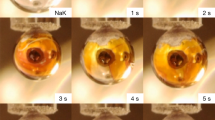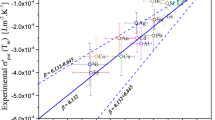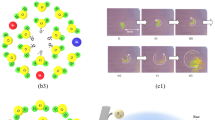Abstract
IN connexion with experiments on semiconductors, one of us1 noted the very considerable change of capacity which took place when a condenser containing aluminium oxide as the dielectric material was placed in a system which was then evacuated. The change of capacity was ascribed to the removal of adsorbed water from the porous aluminium oxide. In the above investigation, the condenser consisted of an aluminium sheet, of an aluminium oxide layer formed electrolytically (by ‘anodizing’) on the sheet, and of a thin metallic layer of aluminium evaporated on to the oxide film. The aluminium sheet and the evaporated surface then formed the plates of the condenser.
This is a preview of subscription content, access via your institution
Access options
Subscribe to this journal
Receive 51 print issues and online access
$199.00 per year
only $3.90 per issue
Buy this article
- Purchase on Springer Link
- Instant access to full article PDF
Prices may be subject to local taxes which are calculated during checkout
Similar content being viewed by others
References
Ansbacher, F., Ph.D. thesis (1949) University of London. Ansbacher, F., and Ehrenberg, W., Proc. Phys. Soc., A, 64, 362 (1951).
Jason, A. C., and Ansbacher, F., Improvements in, and relating to, the measurement of moisture. Brit. Patent Appl. No. 2936/52.
Author information
Authors and Affiliations
Rights and permissions
About this article
Cite this article
ANSBACHER, F., JASON, A. Effects of Water Vapour on the Electrical Properties of Anodized Aluminium. Nature 171, 177–178 (1953). https://doi.org/10.1038/171177b0
Issue Date:
DOI: https://doi.org/10.1038/171177b0
This article is cited by
-
Fabrication and properties of anodic alumina humidity sensor with through-hole structure
Chinese Science Bulletin (2008)
-
Electrical properties of anodized aluminium in a humid atmosphere
Journal of Materials Science (1986)
Comments
By submitting a comment you agree to abide by our Terms and Community Guidelines. If you find something abusive or that does not comply with our terms or guidelines please flag it as inappropriate.



